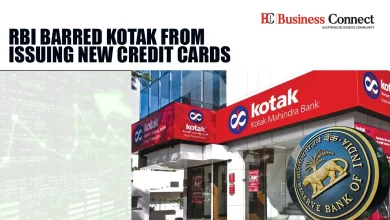Safeguard Your Remittances: Tips For UK-India Transfers

Safeguard Your Remittances: Top 7 Tips for UK-India International Transfers
In 2023, India had the highest remittance inflows worldwide, with USD 125 billion, according to the latest Migration and Development Brief from the World Bank. Transfers from the United Kingdom were a major contributor to this figure, given the large number of people of Indian origin living in the UK; nearly 1.9 million per the 2021 UK Census.
Expats who send money to India from the UK to support their families, pay for their children’s education, invest in properties or for any other reason usually use digital platforms like money transfer apps or banks’ online portals to perform their transactions.
However, with each of those channels, there’s always the risk of security breaches and fraud. To protect your money and personal data and ensure a seamless transaction, read on for seven tips on how to safeguard your online international remittances:
1. Choose a reputable service provider.
Entrusting your hard-earned money and personal information to an established, licensed platform is the first step towards securing your online transfer. One way to ensure a company’s legitimacy is to check if it’s authorised by the Financial Conduct Authority (FCA) in the UK, a regulatory entity responsible for overseeing the financial services industry and protecting the interests of consumers.
His Majesty’s Revenue and Customs (HMRC), the UK tax authority, is another organisation with which money transfer operators must enlist to guarantee compliance with anti-money laundering regulations. So, if a company is registered with both HMRC and the FCA, this bodes well for its credibility.
Additionally, it would help if you research ratings and reviews from other customers to gauge the service provider’s reputation and standing in the market.
2. Assess the company’s security measures.
Online fraudsters and scammers are becoming increasingly adept at devising new ways to circumvent security measures and steal sensitive information. For this reason, you’ll want to make sure that the money transfer service you use employs robust security protocols, including:
- Secure Socket Layers (SSL): SSL is a standard security technology that encrypts data when it’s transmitted between your device and the money transfer platform’s server, ensuring that third parties can’t intercept it. Look for SSL-secured websites with “https” URLs and padlock symbols in the address bar to confirm this.
- Two-Factor Authentication (2FA): This extra security layer requires you to enter a unique code sent to your email address or phone before completing a transaction.
- Data Encryption: Data-at-rest encryption involves converting plain text into a code to ensure that even if hackers gain access to the system, they won’t be able to make sense of what they’re looking at.
3. Verify recipient details.
The minute you hit “send” on a transfer, your money will be en route to the recipient, regardless of whether you’ve entered the correct details. To avoid sending money to the wrong person, double- and triple-check that you’ve typed in the right name, bank account number, contact details and other relevant information before authorising a transfer.
Moreover, most money transfer apps offer features like saved recipient information and transaction histories that you can use to eliminate having to type in the recipient’s details every time and, in turn, reduce the risk of making mistakes.
4. Be wary of phishing attempts.
Phishing is a type of cyber attack in which scammers masquerade as a legitimate company or individual to deceive you into giving them confidential information like your passwords, usernames, credit card numbers, banking details and other important data so they can use or sell it for criminal purposes.
The most common ways phishing happens is through emails, with links that redirect you to fake websites that look like the real ones, calls or texts wherein the scammer poses as a representative from the money transfer company urging you to take immediate action, or the advanced fee technique, wherein fraudsters promise to send you a large sum of money if you pay a small fee first (the Nigerian Prince scam is one example).
Remember, trustworthy service providers won’t ask you to reveal any private information if you don’t initiate the contact. If you receive any dubious emails, messages or calls, immediately contact your money transfer operator and report the incident.
5. Create strong, unique passwords.
In coming up with a password for your online money transfer account, aim for a combination of letters (upper and lower case), symbols and numbers to make it tough for hackers to crack or guess. Steer clear of passwords that clearly identify you, like your birth date, name, partner’s or children’s names, phone number and other personal information.
Also, while it may be easier to have just one password for all your online accounts or different variations of it across multiple platforms, don’t fall into this trap since if a hacker manages to obtain one, they’ll have access to all the others as well.
6. Educate yourself on current exchange rates.
Exchange rates are an integral component of international money transfers. They dictate how much money your recipient will collect in INR, and they fluctuate constantly, sometimes significantly, depending on various market factors like political events, changes in economic policies and supply and demand.
That’s why it’s crucial to keep up to date with the latest exchange rates, especially if you frequently transfer money overseas. You can use online tools and services like currency converters, and reliable news sources to track exchange rate ebbs and flows, and then make more informed decisions about when to transfer your funds.
7. Set up alerts and notifications on your accounts.
Aside from helping you stay on top of your finances, activating notifications and alerts on your money transfer accounts can also serve as an early warning system for any suspicious activity.
You can receive real-time updates if there are any balance changes, login attempts from new devices or locations, outgoing transfers or any other irregularities that may signal fraudulent activity.
Protect Your Finances With the Right Transfer Service Provider
While you certainly have a hand in ensuring the security and success of your money transfers, selecting a trustworthy, reliable service provider will make the process a whole lot easier.
Research and compare the offerings and features of different money transfer companies and apps to find the one that values your financial security and convenience as much as you do.






